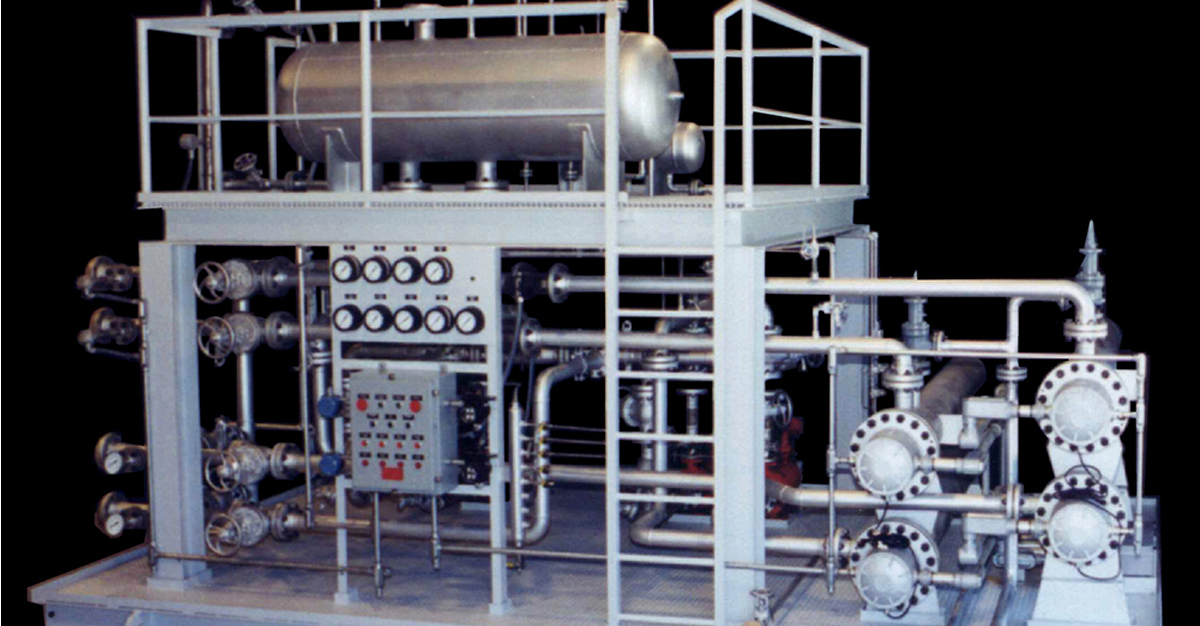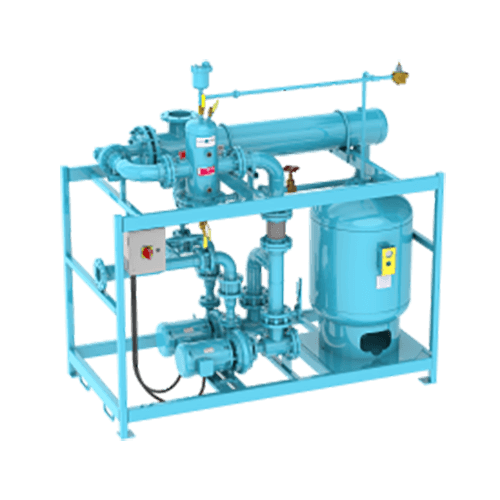DVS Heat Transfer Systems in Austin: How Local Industries Are Innovating Heat Transfer Solutions
Checking out the Conveniences and Applications of Heat Transfer Equipments in Modern Sector
Heat transfer systems play a necessary function in contemporary industry. They incorporate numerous devices such as conduction, radiation, and convection, each adding to reliable thermal monitoring. Industries like production and aerospace advantage considerably from these systems. As improvements continue, the combination of innovative products and modern technologies assures to improve energy performance. This development raises important inquiries concerning the future effects for sustainability and functional expenses across several markets. What exists in advance in this continuous makeover?
Recognizing Heat Transfer Principles
Heat transfer concepts are fundamental to the procedure of numerous industrial systems. These principles include the mechanisms of convection, conduction, and radiation, each playing an important duty in managing thermal power. Understanding transmission includes analyzing exactly how Heat moves through solid products, while convection pertains to Heat transfer in fluids, driven by fluid movement. Radiation, distinctive from the other 2, entails power transfer with electro-magnetic waves. The effectiveness of Heat transfer impacts system efficiency, energy intake, and overall performance. Effective thermal administration is essential in processes such as air conditioning, Heat, and heating healing. By understanding these concepts, industries can enhance their procedures, lower power costs, and enhance equipment longevity, thus adding to a more effective and lasting commercial landscape.
Trick Sorts Of Heat Transfer Systems
While different markets use Heat transfer systems for varied applications, a number of crucial kinds attract attention because of their specific functions and effectiveness. The most common kinds consist of convection, radiation, and transmission systems. Transmission systems transfer Heat via straight call in between products, making them effective in solid-state applications. Convection systems, on the various other hand, make use of liquid activity to move Heat, suitable for heating or cooling down gases and fluids. Radiation systems run without a medium, counting on electromagnetic waves to transfer Heat, suitable for high-temperature atmospheres. Each type serves unique purposes, allowing sectors to tailor their Heat transfer solutions based upon functional demands, power performance, and cost-effectiveness. Understanding these systems is important for optimizing efficiency in different industrial setups.
Industrial Applications of Heat Transfer Technologies
The application of Heat transfer technologies in market plays a crucial role in enhancing power effectiveness and enhancing procedures. DVS Heat Transfer Systems. By carrying out sophisticated Heat exchange systems, business can greatly reduce their environmental influence while enhancing general productivity. This assimilation not only cultivates sustainability however additionally straightens with contemporary regulatory and customer needs for greener methods
Power Effectiveness Improvements
As sectors progressively prioritize sustainability, power efficiency enhancements in Heat transfer innovations have actually ended up being essential for lowering operational expenses and environmental impact. Improved Heat exchangers, as an example, use sophisticated products and designs to make the most of thermal performance while decreasing energy consumption. Incorporating variable rate drives in pumping systems enables for far better control of fluid flow, leading to substantial energy financial savings. The implementation of wise sensors and automation supplies real-time surveillance, enabling adjustments that enhance power usage. In addition, waste Heat recuperation systems capture excess thermal energy, converting it right into useful power. These developments not only enhance energy effectiveness however likewise add to an extra lasting commercial landscape by reducing greenhouse gas exhausts and sustaining conformity with environmental regulations.
Refine Optimization Techniques
Refine optimization methods are essential in boosting the efficiency and effectiveness of Heat transfer technologies in commercial applications. These techniques entail refining procedures to maximize Heat transfer efficiency while minimizing power intake and operational costs. Methods such as computational liquid characteristics (CFD) modeling permit designers to evaluate and mimic Heat transfer scenarios, identifying locations for enhancement. Furthermore, real-time monitoring systems can provide beneficial information on temperature gradients and flow rates, making it possible for changes that enhance performance. In addition, applying sophisticated control approaches, such as anticipating analytics, can enhance system responsiveness to differing operational needs. By applying these optimization methods, industries can attain higher thermal performance, minimized downtime, and improved product quality, inevitably causing increased competition in the industry.

Environmental Influence Reduction
While industrial Heat transfer technologies are vital for functional efficiency, their application additionally presents possibilities for significant ecological influence reduction. By boosting power effectiveness, these systems minimize fuel intake, resulting in reduced greenhouse gas exhausts. Advanced Heat exchangers can recoup waste Heat, redirecting it to preheat inbound liquids, therefore reducing energy requirements. On top of that, the integration of Heat transfer innovations in renewable resource systems, such as solar thermal and geothermal applications, supports he said the shift to sustainable methods. Industries that use these technologies likewise profit from lowered functional prices and enhanced governing compliance. In general, the calculated application of Heat transfer systems not just reinforces efficiency however additionally fosters a more lasting commercial landscape, adding to international ecological objectives.
Benefits of Effective Heat Transfer Equipments
Reliable Heat transfer systems supply substantial benefits in modern-day market, mostly through improved energy efficiency and cost decrease. By maximizing thermal monitoring, these systems lessen energy waste, causing lower functional costs (DVS Heat Transfer Systems). Organizations can accomplish greater sustainability and improved profitability.

Power Efficiency Improvements
As markets progressively focus on sustainability and cost-effectiveness, power efficiency enhancements in Heat transfer systems have become an essential focus. Boosted efficiency in these systems results in decreased power consumption, allowing facilities to run more sustainably. By enhancing Heat transfer techniques, markets can lessen waste Heat and accomplish far better thermal monitoring, substantially decreasing their ecological effect. Developments in modern technologies such as Heat exchangers and insulation materials contribute to improved efficiency and integrity. Implementing energy-efficient Heat transfer services not only sustains conformity with regulative requirements however also cultivates a society of advancement within organizations. Ultimately, these improvements are essential in straightening industrial operations with worldwide energy preservation objectives, paving the method for a more lasting future in manufacturing and handling markets.
Cost Decrease Opportunities
By optimizing Heat transfer systems, industries can expose significant expense reduction chances that enhance their lower line. Efficient Heat transfer decreases power consumption, leading to reduced utility expenses and reducing operational expenses. In addition, enhanced system efficiency decreases the requirement for upkeep and repair services, additionally saving prices in time. Boosted Heat transfer can likewise expand equipment life expectancy, permitting companies to postpone capital investment on substitutes. Waste Heat healing systems can change excess Heat into functional power, further driving down prices. These systems not just enhance processes yet also contribute to sustainability efforts, placing companies favorably in a significantly eco-conscious market. On the whole, the financial benefits of efficient Heat transfer systems are significant and necessary for affordable benefit.
Developments in Heat Transfer Solutions
Just how can modern sector improve its procedures with innovative Heat transfer services? By embracing sophisticated materials and modern technologies, sectors can greatly improve thermal efficiency and performance. Innovations such as nanofluids, which boost Heat transfer abilities past conventional liquids, and phase change materials that keep and launch thermal power, are obtaining grip. In addition, the assimilation of clever sensing units and IoT gadgets permits real-time surveillance and optimization of Heat more information transfer processes, minimizing waste and enhancing system responsiveness. Additionally, additive manufacturing techniques enable the production of even more complex Heat exchangers that make the most of surface while minimizing product usage. Collectively, these innovations drive functional efficiency and produce competitive benefits in different sectors, consisting of aerospace, manufacturing, and power.
The Function of Heat Transfer in Sustainability Efforts
While the promote sustainability remains to improve industries, the duty of Heat transfer innovations becomes progressively important in attaining environmental objectives. Efficient Heat transfer systems assist in power effectiveness by enhancing thermal monitoring in different procedures, significantly reducing power intake and greenhouse gas discharges. For instance, progressed Heat exchangers are used in commercial applications to reclaim waste Heat, consequently decreasing power waste. Additionally, technologies such as stage change materials boost thermal storage space, contributing to renewable resource combination. The adoption of sustainable liquids in Heat transfer systems can decrease environmental effect. By focusing on Continued reliable Heat transfer, sectors not just improve operational performance but also align with international sustainability campaigns, cultivating a cleaner, a lot more lasting future.
Often Asked Questions
Just How Do Heat Transfer Systems Impact Energy Expenses in Production?
Heat transfer systems significantly affect energy costs in manufacturing by boosting performance, minimizing waste, and enhancing thermal management. These improvements result in lower functional expenses, ultimately benefiting overall productivity and earnings in commercial operations.
What Maintenance Is Needed for Heat Transfer Systems?
Maintenance for Heat transfer systems consists of normal inspections, cleansing of parts, examining fluid degrees and problems, changing used components, and making certain proper insulation. These actions improve effectiveness, prolong life-span, and protect against costly failures in procedure.
Are There Safety And Security Worries With Heat Transfer Solutions?
Safety and security issues with Heat transfer systems include possible leaks, pressure build-up, and thermal hazards. Correct layout, normal upkeep, and adherence to safety and security methods are necessary to minimize these risks and ensure secure operation in commercial environments.
Exactly How Can I Pick the Right Heat Transfer System for My Organization?
Choosing the ideal Heat transfer system involves examining variables such as efficiency, application demands, spending plan constraints, and security criteria. A thorough analysis of these aspects will certainly aid assure perfect performance and dependability in organization procedures.
What Are Common Failings in Heat Transfer Systems and Their Causes?

Understanding transmission involves assessing exactly how Heat relocates via solid materials, while convection pertains to Heat transfer in liquids, driven by liquid movement. By optimizing Heat transfer approaches, markets can minimize waste Heat and achieve much better thermal administration, greatly decreasing their environmental impact. Waste Heat healing systems can change excess Heat into functional energy, better driving down expenses. Advanced Heat exchangers are used in industrial applications to redeem waste Heat, consequently minimizing energy waste. Typical failings in Heat transfer systems consist of leakages, deterioration, and ineffective Heat exchange.